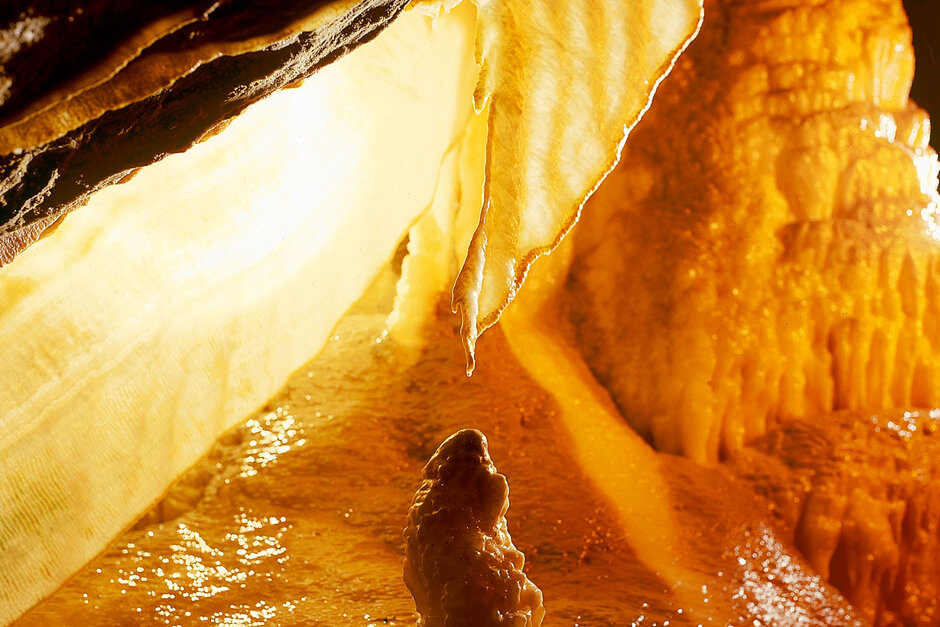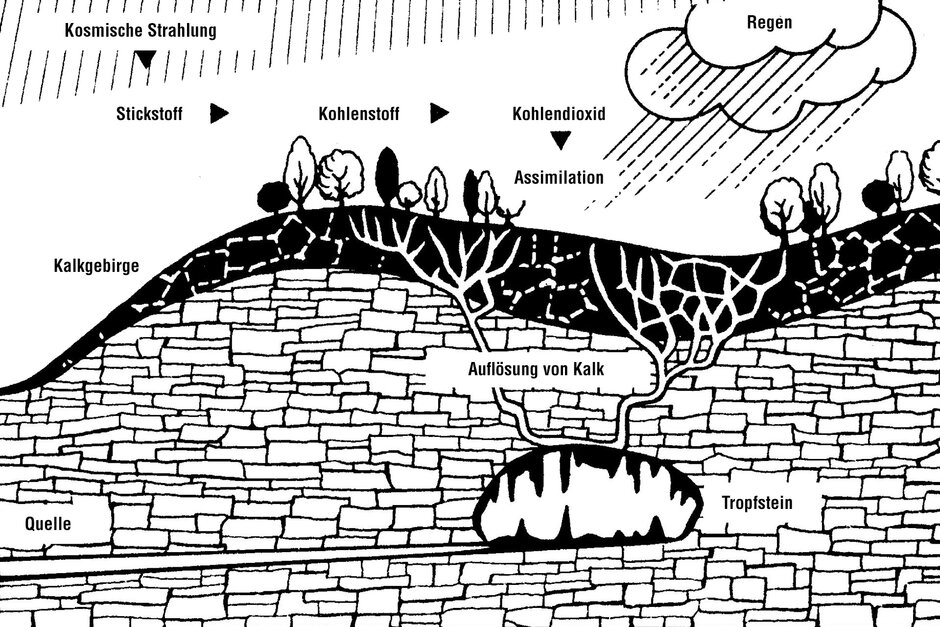Dripstone caves are found exclusively in limestone mountains (karst), which formed in coral reef zones of the Devonian sea (Devon = 3rd segment of the ancient history of the earth).
The most important water-soluble rocks are limestone and karst. They are not attacked by pure water, but rainwater is not chemically pure. It absorbs carbon dioxide (CO2) from the air and from ground which is covered with vegetation. The combination acts on the rock like an acid, and wears away the limestone rock. A network of water channels is created, which wash out larger and larger cavities. As a result of gravity, the water shifts its path deeper and deeper into the ground. The upper parts of the system are left empty. Caves have been created.

Anyone who enters a dripstone cave will be surprised by a variety of stone formations (sinter). Sinter formation is the reverse procedure of cave formation. Water and CO2 dissolve small components from the rock mass and transport the limestone to the depths. In the subterranean cavities, the water releases CO2 and can then no longer hold the limestone. It becomes deposited along the path that the water travels.
When the deposition takes place underwater, beautiful crystals are created. If the water drips directly into an airspace, columns are created in standing (stalagmite) and hanging (stalactite) forms. Where the limestone is separated out on the ceiling along the way, sinter sheets (curtains) are formed. The rate of growth of these formations is estimated at c. 1 mm every 10 years.
The discovery of the Atta cave
The Atta cave was discovered by accident. What an accident!
Quarrymen of the Biggetal lime works could not believe their eyes on 19 July 1907: as the enormous dust cloud of the explosion subsided, they found themselves looking into a rock crevice which had been exposed and was flooded with sunshine. The crawled in, and what they saw left them speechless. The workers looked into a labyrinth of the most beautiful dripstone formations – artfully grown stalagmites and stalactites – stone curtains which were draped artistically from the rock ceiling, as if a decorator had created them as his masterwork. The quarrymen of Attendorn had – without knowing it – exposed the entrance to one of the greatest natural wonders of the world: the entrance to the fabulous Atta cave. Named after the Princess Atta, who gave her name to the Hanseatic city of Attendorn.
